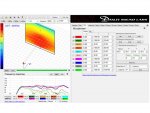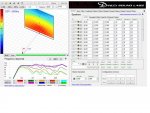Re: tall skinny speakers
That would be a riot.
But the main point I am taking away from the work Dave is doing is that some things today are too perfect. And rock music, or any music, begs to be more random. All those measurements, all those processors, all the control of modern sound reinforcement has drained the excitement from the show. Sound has become sterile, too predictable, too controlled.
Remember what brought you into the sound business, or hobby? Remember the chest pounding of being FOH in an arena in front of 40 S4's? Or the likes there of?
We we have squeezed the life out of a live show to the point that if I close my eyes I can almost see a DJ loading a CD.
Do not get me wrong, I love those tools, the digital consoles, the DSP's, the numbers, but it is the music, the excitement of the show that made me want to be a part of the process.
Not disagreeing but in 'Sound City'...great film... The were in the room and knew they were gonna hear music through the Neve. If Dave REALLY had a sense of humor he would have a 'B' Xenyx mixer hidden and used for playback!
That would be a riot.
But the main point I am taking away from the work Dave is doing is that some things today are too perfect. And rock music, or any music, begs to be more random. All those measurements, all those processors, all the control of modern sound reinforcement has drained the excitement from the show. Sound has become sterile, too predictable, too controlled.
Remember what brought you into the sound business, or hobby? Remember the chest pounding of being FOH in an arena in front of 40 S4's? Or the likes there of?
We we have squeezed the life out of a live show to the point that if I close my eyes I can almost see a DJ loading a CD.
Do not get me wrong, I love those tools, the digital consoles, the DSP's, the numbers, but it is the music, the excitement of the show that made me want to be a part of the process.
Last edited:


